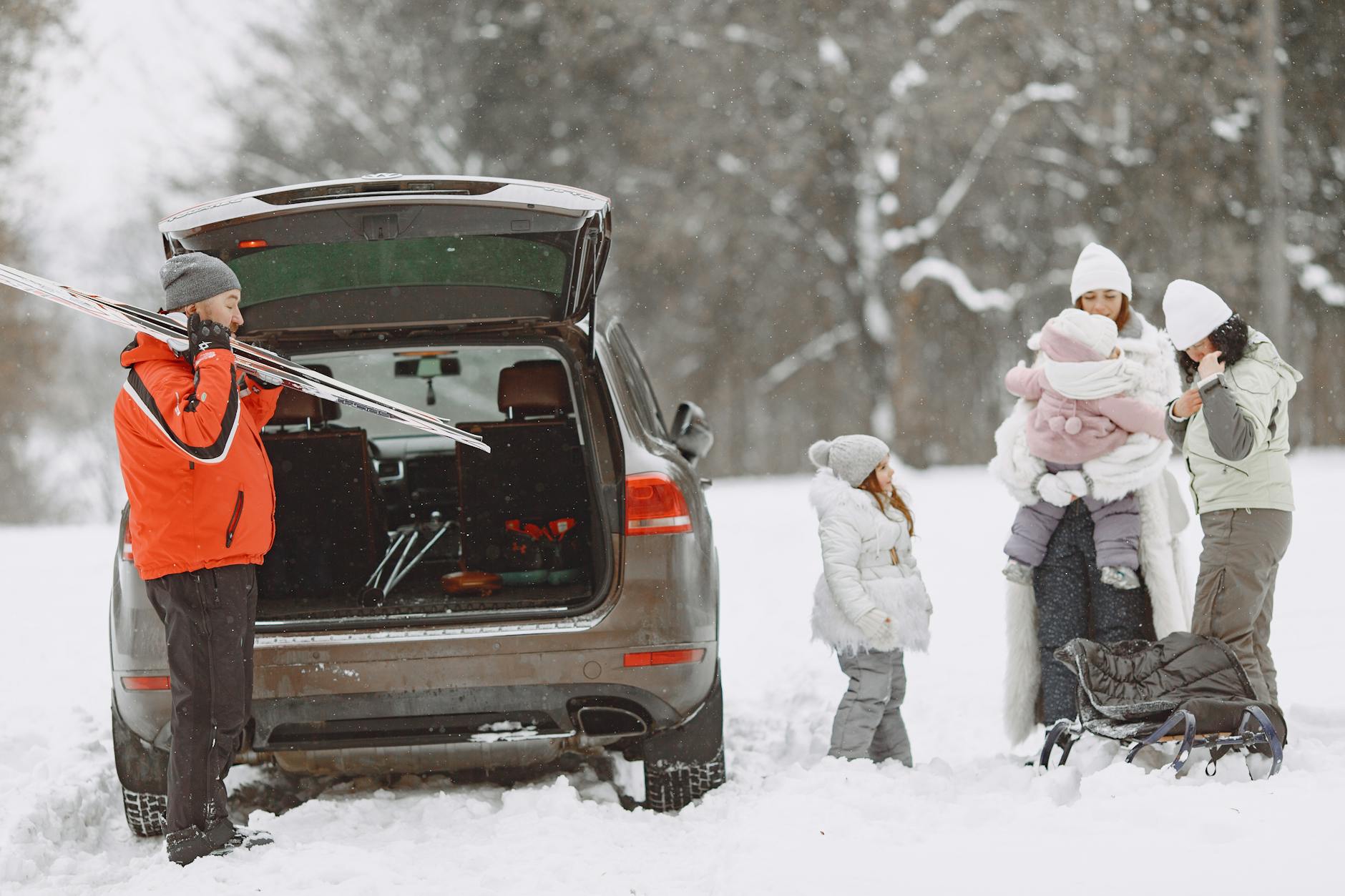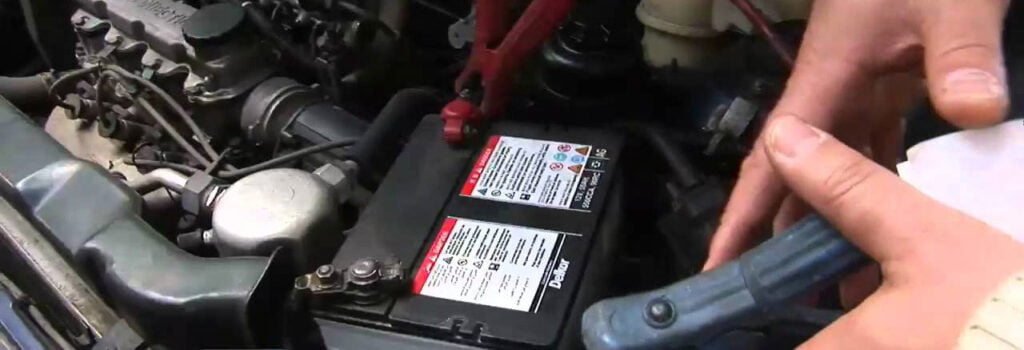Every season brings its own set of challenges for your car. From icy roads in winter to scorching heat in summer, weather conditions can take a toll on your vehicle’s performance, safety, and even its longevity. Fortunately, a little seasonal maintenance goes a long way in keeping your car in top shape and avoiding expensive repairs. Whether it’s checking tire pressure, monitoring fluids, or prepping for sudden weather changes, staying ahead can make all the difference. It’s not just about extending your car’s lifespan—it’s about driving with confidence, no matter the season.
Spring: Transitioning from Winter’s Chill
Winter’s grip can be tough on your car, leaving behind a host of issues that require attention come springtime. With the melting of snow and rising temperatures, it’s the perfect time to inspect, restore, and prepare your vehicle for the warmer months ahead. From hidden rust caused by road salt to worn-out tires, proper maintenance now can save you from costly repairs down the line. Let’s ensure your car is road-ready for spring and beyond.
Inspect for Winter Damage
Cold, salt, and slush take a toll on your car, especially on its underbelly. Road salt, used for de-icing, can build up under your car over the winter and corrode metal parts. This means your undercarriage could suffer from rust, even if your vehicle looks pristine elsewhere.
Take a close look underneath your car and in less obvious spots like the wheel wells. Spot any rusty areas? Address them as soon as possible. For larger corrosion issues, you might need a professional. A DIY solution for minor issues is to wash your car thoroughly, paying extra attention to the undercarriage. Many car washes offer specific undercarriage sprays, or you can use a garden hose to rinse salt away. Proactive care now helps avoid more serious structural damage later.
Tire Maintenance
Tires are your car’s direct connection to the road, and after a harsh winter, they likely need some TLC. Start by checking the tread depth. If you’ve used winter tires, swap them for summer or all-season ones when temperatures stay consistently above 45°F. Winter tires wear out quickly on warm pavement, so switching them is essential for both safety and longevity.
It’s also a great time to rotate your tires, ensuring even wear across all four. Uneven tread can affect handling and performance down the road. Don’t forget to check tire pressure—warmer temperatures can cause fluctuations, and driving on improperly inflated tires can reduce fuel efficiency.
Fluid Checks and Replenishment
Fluids keep your car running smoothly, but winter can have a draining effect. Start by checking your oil—cold weather thickens it, potentially reducing efficiency. If your last oil change was before winter, now’s the time to replace it.
Next, inspect the coolant. You’ll want the right mix to prevent overheating as temperatures climb. Don’t forget brake fluid, which can absorb moisture over time, reducing brake effectiveness. Lastly, top off your windshield washer fluid to cut through springtime pollen and dust more effectively. A specialized, streak-free formula can keep your visibility clear.
Battery Tests and Air Filtration
A sluggish battery is common after winter, as freezing temperatures reduce its ability to hold a charge. If your car hesitates to start, have your battery tested. Many auto shops offer free battery checks, or you can invest in a reliable tester for home use. If your battery is more than three years old, consider replacing it to avoid being stranded unexpectedly.
Spring is also the perfect time to change out your cabin air and engine air filters. These can clog with debris from winter driving, reducing airflow and performance. A clean cabin filter improves air quality inside your car—your allergies will thank you! Similarly, a fresh engine filter ensures optimal fuel economy and keeps your engine breathing easier.

Photo by Daniel @ bestjumpstarterreview.com
By taking these steps as winter fades, you’ll set yourself—and your car—up for smooth, worry-free driving in the spring season.
Summer: Beating the Heat
Summer heat doesn’t just make your drive uncomfortable—it also puts stress on your car’s vital systems. High temperatures affect everything from the engine’s cooling system to your tires, and failing to prepare could leave you stranded or worse. To make sure your car is summer-ready, focus on these critical maintenance tasks.
Coolant and Radiator Care
Your car’s cooling system is a frontline defense against summer heat. When the engine heats up, coolant circulates to absorb and dissipate that heat. However, low coolant levels or issues with your radiator can lead to engine overheating, which can mean costly repairs.
Here’s what you should do:
- Check coolant levels regularly: Open the hood and check the level using the markings on the reservoir. Top it off if it’s low—just make sure to use the correct type of coolant for your vehicle.
- Inspect radiator hoses: Look for cracks, bulges, or leaks along the hoses. Damaged hoses can burst under extreme heat. If you see any signs of wear, replace the hose as soon as possible.
- Flush the system: If it’s been a while, consider having the coolant system flushed to remove any gunk and ensure optimal performance. This is especially important if you live in a region that experiences intense heatwaves.
Air Conditioning Performance
When temperatures soar, a functioning air conditioning system feels less like a convenience and more like a necessity. But over time, your AC can lose efficiency due to refrigerant leaks or mechanical wear.
- Test the air conditioning: Run your AC on full blast before summer sets in. If it’s not cooling efficiently, it’s time to investigate.
- Schedule a service check: Low refrigerant could be the issue, but you might also have a clogged condenser or a failing compressor. A trusted mechanic can pinpoint and fix the problem.
- Clean air vents: Dust buildup in air vents can restrict airflow. Use a can of compressed air to clear any blockages.

Photo by Kampus Production
Tire Care in Heat
Did you know that heat causes tires to expand? Underinflated or overinflated tires are at greater risk of a blowout when temperatures rise. To stay safe on the road, keeping a close eye on your tires is essential.
- Regularly check tire pressure: Use a tire pressure gauge weekly, and follow the manufacturer’s recommendations (usually found in the owner’s manual or inside the driver’s door).
- Inspect the tread: Summer can increase wear and tear on your tires. Ensure your tread depth is at least 2/32 of an inch for safe driving.
- Avoid overloading your vehicle: Extra weight puts added stress on your tires, especially in hot weather.
Brake Inspection
Heavy summer traffic combined with high temperatures can take a toll on your vehicle’s braking system. Overheated brakes can lose their effectiveness, making it essential to keep them in good condition during peak travel months.
- Listen for noise: Squeaking or grinding sounds when you hit the brakes are a red flag. These noises often indicate worn pads or rotors.
- Check brake fluid: Over time, brake fluid absorbs moisture, which can reduce its performance under stress. If the fluid isn’t clear, it’s time for a flush.
- Inspect brake pads: Thin or unevenly worn pads can lead to reduced stopping power. Have them replaced if they’re nearing the end of their lifespan.
Sun Damage Protection
Your car’s interior can take a serious beating from the sun. UV rays cause fading, cracking, and discoloration in your dashboard, seats, and even seatbelts. Thankfully, protecting your vehicle’s interior is simple:
- Use sunshades: A reflective windshield sunshade can keep your car cooler and protect delicate surfaces from UV damage.
- Invest in a car cover: For long-term protection, especially if you park outside regularly, a car cover provides robust protection against sunlight.
- Clean and condition surfaces: Apply a UV-protective cleaner to your dashboard and seats to help preserve their look and extend their lifespan.
By addressing these summer-specific maintenance tasks, you’ll not only improve your driving comfort but also help your car stand the test of summer heat.
Fall: Preparation for Colder Months
As the leaves begin to turn and temperatures start to drop, it’s time to get your car ready for the demands of winter. Preparing your vehicle during the fall ensures you avoid unpleasant surprises with icy conditions or frigid mornings. From swapping out tires to inspecting vital systems, taking these steps now keeps you safer on the road when winter hits.
Tire Health and Winter Tire Installation
Your tires are the foundation of your car’s safety and functionality, especially when snow and ice enter the picture. Fall is the perfect time to inspect your tire tread and consider switching to winter-specific tires.
- Check the tread depth: You’ll want at least 6/32” tread depth for reliable traction. A quick trick? Insert a quarter into the tread grooves with Washington’s head upside down—if the top of his head is visible, your tires need replacement.
- Inspect for damage: Look for cracks, bulges, or uneven wear that could compromise safety.
- Install winter tires: If you live in an area with consistent freezing temperatures, winter tires are a smart investment. They’re made with softer rubber and deeper tread patterns to provide better grip and control in snowy or icy conditions.
Test Heating and Defroster Systems
A comfortable cabin and clear visibility are essential for safe winter driving. Ensuring your car’s heating and defroster systems work properly will save you frustration—nobody wants to discover their defroster has failed during the season’s first frost.
Run the heater and defroster at full blast to confirm they’re working. Check for the following:
- Consistent airflow: If the air feels weak, there could be a clog in the vents or a blower motor issue.
- Warm and rapid temperature increase: If it’s not warming up quickly, it may be time to inspect the thermostat or heating core.
Addressing issues now prevents them from worsening or triggering costly repairs during the cold season.
Battery and Antifreeze Check
Cold weather easily challenges your car’s battery and cooling systems, so addressing these early in fall makes a big difference.
- Test your battery: Car batteries struggle in freezing conditions, losing up to 50% of their power in subzero temperatures. Use a battery tester or visit an auto shop to ensure it’s holding a proper charge. Batteries older than three years might need replacement.
- Check antifreeze levels and quality: Pop the hood and ensure your coolant reservoir is filled to the recommended levels. Also, verify that the antifreeze-to-water ratio is correct (usually 50/50). If it’s been a while since your system was flushed, now’s the time to replace it to prevent engine freezing or overheating.

Photo by Gustavo Fring
Lights and Wiper Blades
Fall brings shorter days and unpredictable weather, so ensuring proper visibility is critical. Take time to inspect your wiper blades and vehicle lighting.
- Inspect wiper blades: Replace blades that streak, smear, or leave patches. For areas prone to snow, consider winter-grade wiper blades designed to handle freezing conditions.
- Top off washer fluid: Use a freeze-resistant windshield washer fluid that won’t solidify during cold spells.
- Check all lights: Test your headlights, taillights, brake lights, and turn signals to confirm they’re bright and functional. Dirty or oxidized headlights can significantly reduce visibility at night, so clean or restore them if needed.
By focusing on these essential tasks during fall, you’ll be better prepared to tackle winter’s challenges with confidence.
Winter: Surviving Freezing Conditions
When winter tightens its grip, your car faces a range of challenges: freezing temperatures, icy roads, and relentless snow. Ensuring your vehicle is equipped to endure these tough conditions doesn’t just make driving easier—it keeps you safe. From prepping your car for the cold to having emergency supplies on hand, here’s how to handle winter’s toughest months.
Winterization Measures
Extreme cold can test your car’s systems to their limits, so preparation is everything. Prioritize these essential steps to winterize your vehicle:
- Antifreeze and Coolant: Check that your antifreeze mix is correct—usually a 50/50 ratio with water is ideal. Antifreeze prevents your engine from freezing while maintaining its overall functionality.
- Winter-Grade Oils and Fluids: Switch to winter-grade motor oil, which is formulated to flow easily in low temperatures. Replace your windshield washer fluid with one designed to resist freezing—nothing’s worse than realizing your fluid has iced over during a storm.
- Cold-Weather Accessories: Equip your car with winter tires or all-season tires that have deep tread. Winter tires provide better traction needed for snow-covered roads.
Taking these measures in advance protects your car and ensures all systems run smoothly through the cold months.
Emergency Preparedness
Winter often brings the unexpected, whether it’s a breakdown or getting stuck in a snowdrift. Having a well-stocked emergency kit isn’t just a good idea—it’s a roadside lifesaver. Here’s what to pack:
- Warmth Essentials: Blankets, gloves, hats, and even hand warmers can make waiting for help more bearable if you’re stranded.
- Practical Tools:
- A sturdy snow shovel for digging out.
- An ice scraper and snow brush for clearing visibility quickly.
- Jumper cables or a portable jump starter for low-battery emergencies.
- A flashlight with extra batteries for nighttime breakdowns.
- Food and Communication: Non-perishable snacks, water, a portable phone charger, and a list of emergency contacts are must-haves.
- Traction Assistance: Bags of kitty litter or sand can help gain traction if your tires get stuck on slick surfaces.
Packing these essentials ensures you’re prepared for anything winter throws your way.
Snow and Ice Removal
Driving with snow or ice on your car is more than inconvenient—it’s dangerous. Not only can it obscure visibility, but falling ice can be hazardous to both you and other drivers.
Take the time to clean your car completely before hitting the road:
- Clear the Roof and Hood: Ice can slide off while driving, creating safety hazards for vehicles behind you.
- Unblock Lights and Mirrors: Snow often accumulates on headlights, taillights, and side mirrors, reducing visibility and making you harder to spot.
- Windshield and Windows: Defrost and scrape all windows thoroughly. Leaving even a small patch of frost obstructed can hinder your ability to see.

Photo by Pixabay
A clean car is a safer car, especially in unpredictable winter conditions.
Maintain a Full Gas Tank
Keeping your gas tank at least half full during winter isn’t just about avoiding the inconvenience of running out—it’s much more critical than that. Here’s why:
- Prevent Condensation: A nearly empty tank allows moisture to develop inside, leading to fuel line freezing. A full tank minimizes this risk and keeps your engine running smoothly.
- Emergency Uses: If you’re ever stranded, keeping the engine running is essential for heat. A fuller tank means hours of warmth while waiting for assistance.
- Added Weight for Traction: In some cases, additional fuel adds weight to your vehicle, which can provide slightly better grip, especially for lighter cars.
Taking these precautions ensures you’re less likely to face unnecessary issues during an already challenging season.
By focusing on winterizing your vehicle, staying ready for emergencies, and following proper snow-removal practices, you’ll be equipped to face freezing conditions without compromising safety or performance.
Conclusion
Seasonal maintenance isn’t just about keeping your car running—it’s about driving safely and saving money. Each season brings unique challenges, whether it’s the heat of summer, winter’s freezing conditions, or the wear-and-tear of fall and spring transitions. By staying proactive, you prevent small issues from turning into major repairs, improve performance, and ensure a smoother ride year-round.
Make car care a priority. Check your tires, fluids, and essential systems regularly. If you’re not sure where to start, consult your owner’s manual or schedule a professional inspection. Your car takes care of you—return the favor.
What steps will you take this season to prepare your car? Let us know in the comments or share your favorite car maintenance tips!




